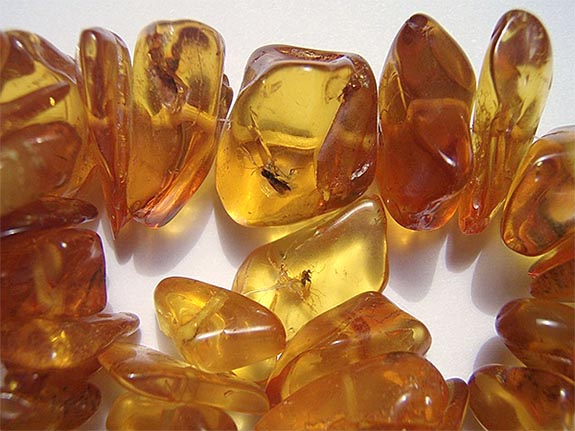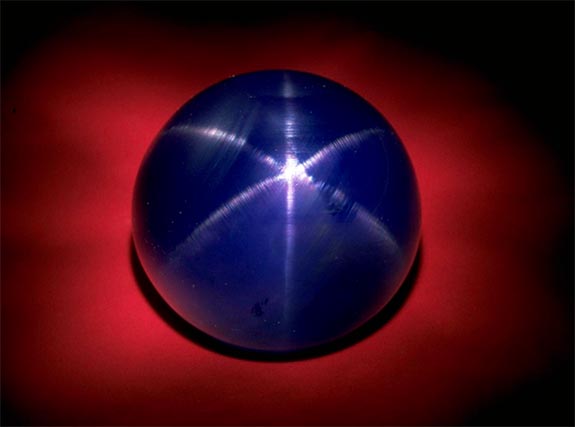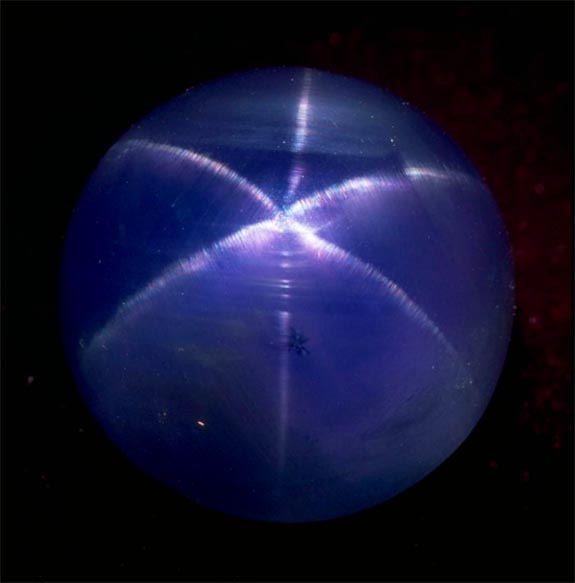Welcome to Music Friday when we bring you fresh songs with jewelry, gemstones or precious metals in the title or lyrics. Today, Gwen Stefani compares boyfriend and country star Blake Shelton to a sapphire in her 2016 release, "Rare."
In this song penned by Stefani and three collaborators, the former No Doubt singer uses the September birthstone to symbolize perfection.
She sings, "You're a sapphire, you're a rolling stone / You're a sparkle in a deep black hole / You're like moon shine, when the curtains close / You're my answer, one that no one knows."
USA Today described "Rare" an "outright declaration of love for Shelton" and Entertainment Weekly called the song a "sweetly smitten confessional."
Shelton took to Twitter to affirm that "Rare" was his favorite song on the album, This Is What the Truth Feels Like. Stefani tweeted back: "Wonder who that one is about?"
Music critics pointed out that a recurring line in the song — "You know I would be dumb to give perfection up" — is a not-so-subtle dig at Shelton's ex-wife Miranda Lambert. Shelton and Stefani began dating in 2015 while they were judges on NBC's The Voice.
"Rare," which has been described as an electropop and folk pop-influenced ballad, is the final track on Stefani's third studio album.
Stefani was famously the lead singer of No Doubt, but decided to pursue a solo career in 2004. She has won three Grammy Awards, an American Music Award, a Brit Award, a World Music Award and two Billboard Music Awards. As a member of No Doubt and as a solo artist, she is credited with having sold more than 30 million albums worldwide.
Born in Fullerton, Calif., in 1969, Gwen Renée Stefani enjoyed the music of Bob Dylan and Emmylou Harris as a child. As a teenager, she was obsessed with The Police and had the privilege of inducting the group into the Rock and Roll Hall of Fame in 2003. During the ceremony she displayed a signed photo of Sting, which he autographed in 1983, when Stefani was 14 years old.
Please check out the live performance of Stefani performing "Rare." The lyrics are below if you'd like to sing along...
"Rare"
Written by Gwen Stefani, Justin Tranter, Julia Michaels and Greg Kurstin. Performed by Gwen Stefani.
You're a sapphire, you're a rolling stone
You're a sparkle in a deep black hole
You're like moon shine, when the curtains close
You're my answer, one that no one knows
And I can't believe it, that you even exist
You know I would be dumb to give perfection up
How can I accept it, that this is so precious?
You know I would be dumb to give perfection up
You're rare
And I'm loving every second of it, don't you know?
You're rare
And only a stupid girl would let you go
You're so good and you don't even know it
You're so good and you don't even know
You're rare
And only a stupid girl would let you go, don't you know?
I am broken, I am insecure
Complicated, oh yeah that's for sure
I feel worthless, I've been hurt so bad
I get nervous you won't love me back
And I can't believe it, that you even exist
You know I would be dumb to give perfection up
How can I accept it, that this is so precious?
You know I would be dumb to give perfection up
You're rare
And I'm loving every second of it, don't you know?
You're rare
And only a stupid girl would let you go
You're so good and you don't even know it
You're so good and you don't even know
You're rare
And only a stupid girl would let you go, don't you know?
Do you really think you wanna make some new memories?
With me?
Do you really think you wanna make some new memories?
With me?
Do you really think you wanna make some new memories?
With me?
Do you really think you wanna make some new memories?
With me?
You're rare
And I'm loving every second of it, don't you know?
You're rare
And only a stupid girl would let you go
You're so good and you don't even know it
You're so good and you don't even know
You're rare
And only a stupid girl would let you go
You're rare
And only a stupid girl would let you go
You're rare
And only a stupid girl would let you go, don't you know?
Credit: Screen capture via YouTube.com.



